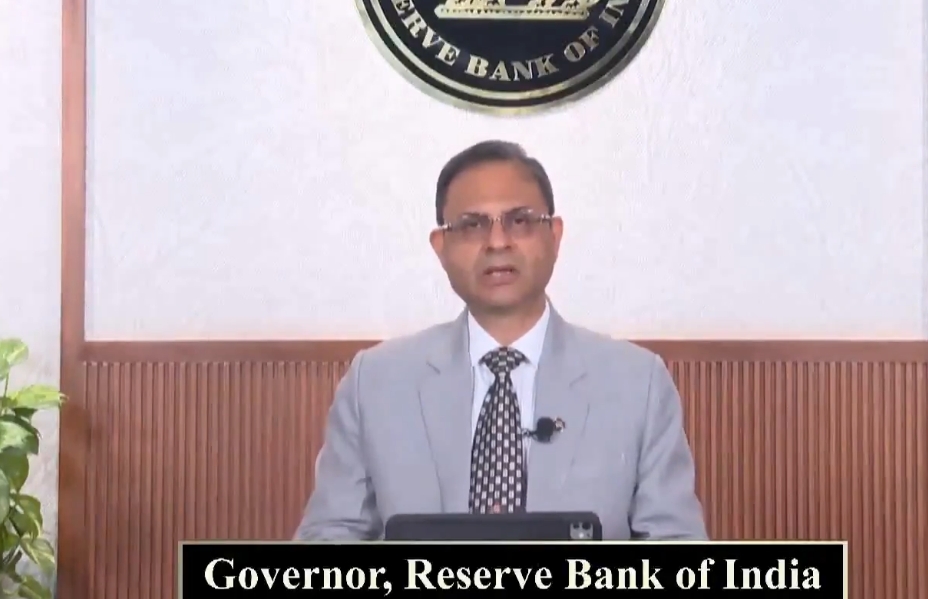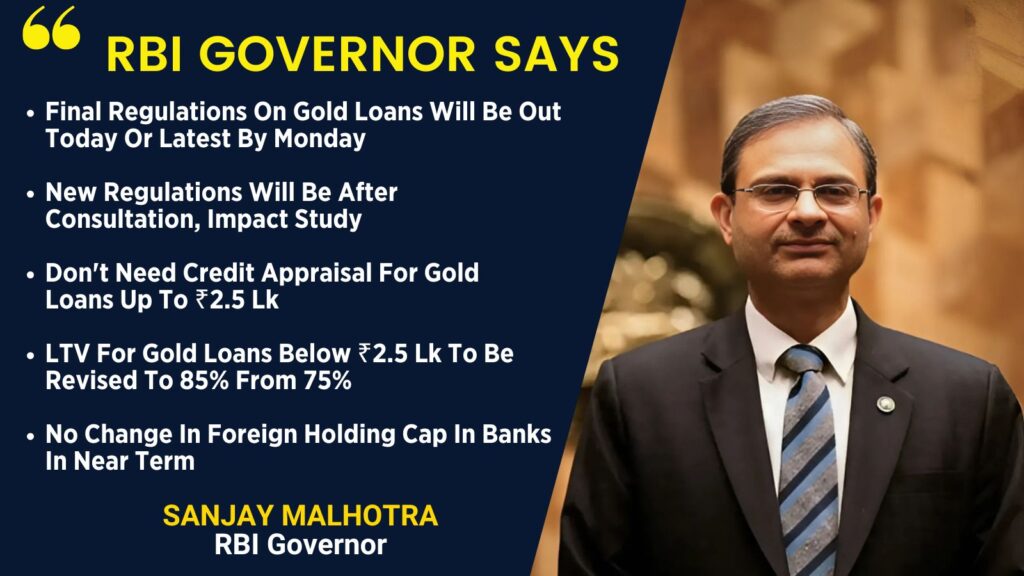By Taaza Wire Business Desk | 6 June 2025

India’s monetary policy made a decisive, two-pronged turn today. Reserve Bank of India (RBI) Governor Sanjay Malhotra not only cut the repo rate by 50 basis points to 5.5 percent—the third straight cut—but also a sizeable 100-bps cut in the Cash Reserve Ratio (CRR), phased in by 29 November 2025. Combined, these will release about ₹2.5 lakh crore of new banking‐system liquidity and lower loans to consumers as well as corporates.
The Policy Moves at a Glance
| Instrument | Old Rate | New Rate | Change | Effective Date |
|---|---|---|---|---|
| Repo Rate | 6.00 % | 5.50 % | ▼ 50 bp | Immediate |
| CRR | 4.00 % | 3.00 % | ▼ 100 bp (in 4 tranches) | Fully in force by 29 Nov 2025 |
The repo rate cut makes borrowing from the RBI cheaper for banks, laying the groundwork for lower home-loan and auto-loan EMIs. The CRR reduction, rolled out in four equal steps, frees up idle cash previously parked with the central bank—effectively giving lenders a war chest to fund new projects or refinance high-cost debt.

RBI CRR and Repo Rate Cut: Why the RBI Pulled Both Levers Now
- Growth Woes: GDP slipped to a four-year low of 6.5 percent in FY25. The Monetary Policy Committee (MPC) wants to jump-start investments before the slowdown deepens.
- Tame Inflation: Headline CPI is projected to average 3.7 percent this fiscal, comfortably below the 4 percent midpoint of the RBI’s target band. A benign food-price outlook, courtesy of an “above-normal” monsoon forecast, gave policymakers room to act.
- Liquidity Management: Call-money rates have clung to the lower band of the Liquidity Adjustment Facility, a sign of “plentiful” system cash. By preponing CRR reductions, RBI is seeking to inject “long-lasting” liquidity that is less expensive and more certain than short-term injection devices.
Five Immediate Winners
- Home Buyers & Auto Shoppers
Floating-rate loans are already resetting downward after the February and April repo cuts. Another 50 bps reduction could shave ₹300–₹400 off the EMI on a ₹30-lakh, 20-year home loan. - SMEs & Exporters
Working-capital lines and export refinance rates tend to track the repo. Lower interest costs arrive just as global orders soften. - Gold-Loan NBFCs
The RBI has increased the loan-to-value (LTV) cap on gold loans below ₹2.5 lakh from 75 percent to 85 percent. Shares of Muthoot Finance and Manappuram Finance surged 7 percent in early trade. - Agriculture & Perishables
Easier credit plus better transport economics (thanks to soft fuel prices) may help farmers and cold-chain players, particularly in the run-up to the festive season. - Bond Investors
A neutral policy stance, abundant liquidity and a falling repo rate create an environment where 10-year G-sec yields could drift closer to 6.5 percent, delivering capital gains on existing holdings.
Risks and Caveats
- Transmission Lags: RBI acknowledges that rate transmission “depends on demand and broader macro conditions.” Banks nursing legacy NPAs or tight CASA ratios may drag their feet on passing the full 50 bp cut to end-borrowers.
- Savings-Rate Squeeze: Lower deposit rates could nudge savers toward riskier assets, including equities and crypto, or push them to lock in funds at small-finance banks offering higher yields.
- Imported Inflation: While crude prices have been range-bound, a sharp rebound or rupee weakness could quickly narrow the RBI’s room to manoeuvre.
- Global Spill-Overs: If the US Federal Reserve delays its own rate-cut cycle, interest-rate differentials could pressure FPI inflows and the currency.
What Comes Next?
Governor Malhotra made two things clear:
- Policy Space Is Narrowing: With a cumulative 100 bps repo reduction since February, the RBI has “limited space left” and will watch data closely before acting again.
- No Change in Foreign-Ownership Limits: Despite speculation, the central bank is not tweaking FDI caps in banks; nor is it altering its neutral stance on liquidity.
Analysts expect at least one more, smaller rate cut before year-end if inflation stays beneath 4 percent. The CRR will fall in 25-bp increments, easing to 3 percent by late November and injecting liquidity in predictable doses.
A Timely Jolt for a Stalling Economy
The RBI CRR and repo rate reduction in 2025 should give a quick fillip to credit availability and sentiment, even if the full transmission takes a quarter or two. By front-loading heavy-duty easing when inflation is contained, policymakers are placing their bet that a timely shock can elevate GDP growth back into the 7–8 percent target signalled by Governor Malhotra.
For lenders, the message is straightforward: cheaper loans from Diwali onwards. For corporate entities, particularly in housing and infrastructure, there is so much liquidity that 2025 may well be the revival year—provided demand keeps pace with credit.
Stay logged on to Taaza Wire for real-time updates on loan-rate revisions, bank reactions and how the RBI’s twin moves ripple across markets and Main Street.
Read More
Markets Rebound After 3-Day Slump, Sensex Climbs Over 260 Points on Global Cues
Lavender Gave Bhaderwah a National Identity, Economic Boost: Dr. Jitendra Singh at Lavender Festival 2025
Adani Group: Stronger Than ever — Gautam Adani’s Vision Amid Storms and Success
What is the new repo rate after RBI’s June 2025 policy review?
The new repo rate is 5.5%, reduced by 50 basis points from 6.0% as of June 6, 2025.
What is CRR and how does its reduction impact the economy?
CRR (Cash Reserve Ratio) is the percentage of a bank’s total deposits that must be kept with the RBI. A reduction in CRR from 4% to 3% releases ₹2.5 lakh crore into the banking system, boosting liquidity for lending.
How will the repo rate cut affect home loan EMIs?
The 50 bps repo rate cut will lead to lower interest rates on floating-rate home loans, reducing monthly EMIs for borrowers.
What does a 100 bps CRR cut mean in real terms?
A 100 basis points cut means banks can lend more of their deposits, unlocking about ₹2.5 lakh crore for productive use in the economy.
When will the CRR reduction be fully implemented?
The CRR cut will be rolled out in four equal tranches and will reach 3% by November 29, 2025.
Will fixed deposit rates go down after the rate cut?
Possibly yes. As banks get cheaper funds from the RBI and more liquidity via CRR cuts, they may reduce FD interest rates.
Is this the lowest repo rate in recent years?
Yes, the current repo rate of 5.5% is the lowest since 2022, when it was at 5.40%.
How does Repo rate policy impact gold loans?
The RBI increased the Loan-to-Value (LTV) ratio for gold loans under ₹2.5 lakh to 85%, up from 75%, benefiting NBFCs like Muthoot Finance.
What is the RBI’s GDP growth forecast for FY25?
RBI has maintained India’s GDP growth forecast at 6.5% for FY25.
Will there be more rate cuts in 2025?
RBI Governor Sanjay Malhotra indicated limited room for further cuts, but if inflation remains low, one more small cut is possible later this year.



